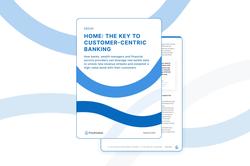The competitive pressure banks face is growing. Product comparability is high, customer expectations are rising, and today's inflationary market and regulatory pressure create new challenges but also clear opportunities. Over the past few years, it became clear that intuitive and well thought-out banking products alone are no longer enough for financial institutions to attract new clients, foster customer loyalty and drive revenue. Instead, the focus has switched towards customer centricity in banking, meaning generating clear added value and designing new customer-centric products and services. Today's article shows you the crucial role that real estate can play in improving customer interaction in banking.
Whenfresh.com has now merged with PriceHubble.com
To provide you with a better experience and improved content, your login page and all our resources are now available on a single website. You will be automatically redirected in a few seconds. If the redirection doesn't happen, please click the button below.
Redirection in 10 seconds...
Go directly to pricehubble.com












